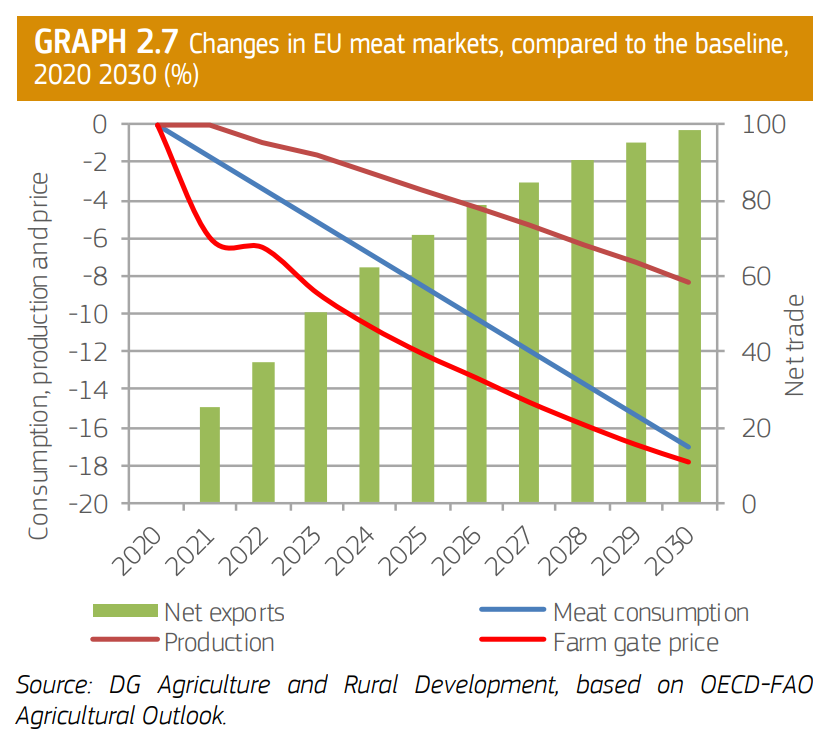Impact of 17 % fall in EU meat consumption by 2030
Monday, 23 December 2019
By Rebecca
No-one can have escaped the headlines about consumer behaviour and views on meat and plant-based foods, with AHDB’s consumer insight team looking into some of the key facts around the rise of plant-based food products. The European Commission has investigated the impact that switching between animal protein and plant protein might have on the prices and production of each.
Currently around 42% of protein consumed in the EU comes from plants, with the remaining 58% coming from animals (meat, fish, eggs and dairy). In the scenario modelled by the European Commission, diets gradually change over the next ten years to a 50/50 ratio. Consumers continue to consume the same number of calories, protein and fats. This would lead to a 17% drop in animal protein consumption.
All the changes mentioned below are compared to the baseline outlook from the European Commission.
The modelling suggests that average farmgate prices would decline by 18%, compared to the baseline forecast. The EU would then become more competitive on the global market, and exports of meat would almost double. Total meat production would decline by 8%. The modelling indicates milk production would also fall by 8%.
While one might expect arable crop prices to rise, the modelling suggests this would not be the case, partly due to a decline in demand for animal feed.
There would also be some environmental impacts. Under the modelled scenario, the EU’s carbon footprint would reduce by 6% (22 million t CO2 eq) in 2030 compared to the baseline. However non-EU countries would also record a decline in greenhouse gas emissions of 33 million tonnes CO2 eq. This is because the EU would be putting more meat and dairy on to the global market, increasing its global market share. In the scenario, it is assumed that meat and dairy demand outside of the EU remains at the baseline forecast. This means production of meat and dairy would relocate from countries where GHG emissions per unit of production are higher, to the EU where they are lower. The EU has a more productive livestock system, which is less carbon intensive than some other countries.
The full report on the impacts is available on page 18 of the EU medium term outlook for Agriculture.
Sign up for regular updates
You can subscribe to receive Beef and Lamb market news straight to your inbox. Simply fill in your contact details on our online form.
While AHDB seeks to ensure that the information contained on this webpage is accurate at the time of publication, no warranty is given in respect of the information and data provided. You are responsible for how you use the information. To the maximum extent permitted by law, AHDB accepts no liability for loss, damage or injury howsoever caused or suffered (including that caused by negligence) directly or indirectly in relation to the information or data provided in this publication.
All intellectual property rights in the information and data on this webpage belong to or are licensed by AHDB. You are authorised to use such information for your internal business purposes only and you must not provide this information to any other third parties, including further publication of the information, or for commercial gain in any way whatsoever without the prior written permission of AHDB for each third party disclosure, publication or commercial arrangement. For more information, please see our Terms of Use and Privacy Notice or contact the Director of Corporate Affairs at info@ahdb.org.uk © Agriculture and Horticulture Development Board. All rights reserved.



